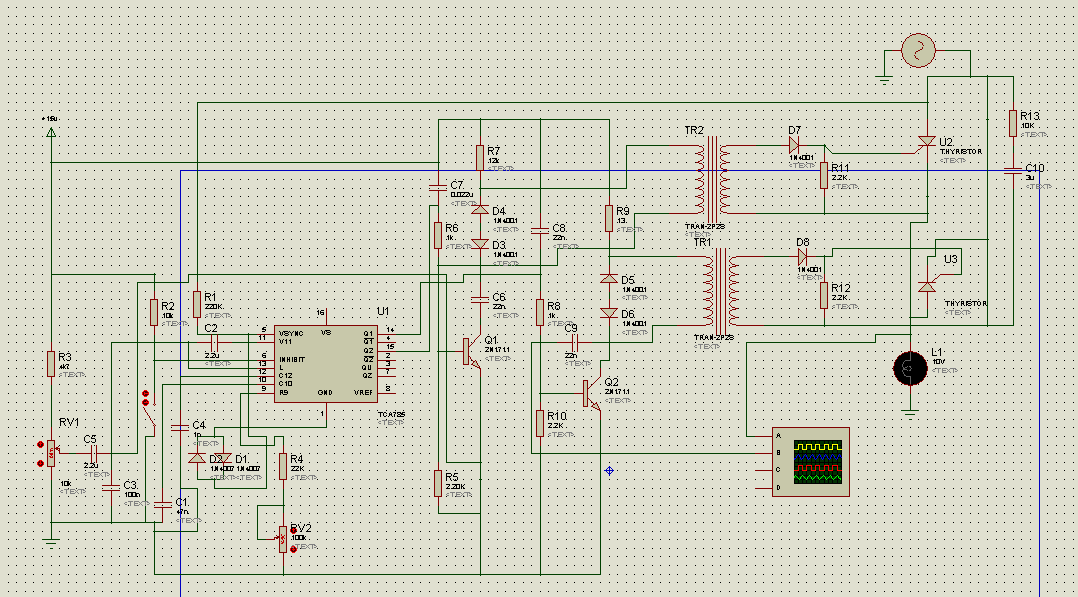newfey
New Member
Hi,
I'm so happy to find this forum.
I have a question.
I have two SCRs in my circuit. I know how a/an SCR is triggered.
Both of them are off at first. Then when I trigger SCR1 , it will become ON.
And as it becomes ON, the capacitor starts to charge.
Then SCR1 is off and SCR2 becomes ON. And it continues ...
My question is this:
I want to trigger these SCRs with IC 555 and control them becoming on or off by their firing angle (with a potentiometer).
How should I change my circuit to gain this?
**broken link removed**
I'm grateful for your help.
Many Thanks ...
I'm so happy to find this forum.
I have a question.
I have two SCRs in my circuit. I know how a/an SCR is triggered.
Both of them are off at first. Then when I trigger SCR1 , it will become ON.
And as it becomes ON, the capacitor starts to charge.
Then SCR1 is off and SCR2 becomes ON. And it continues ...
My question is this:
I want to trigger these SCRs with IC 555 and control them becoming on or off by their firing angle (with a potentiometer).
How should I change my circuit to gain this?
**broken link removed**
I'm grateful for your help.
Many Thanks ...


